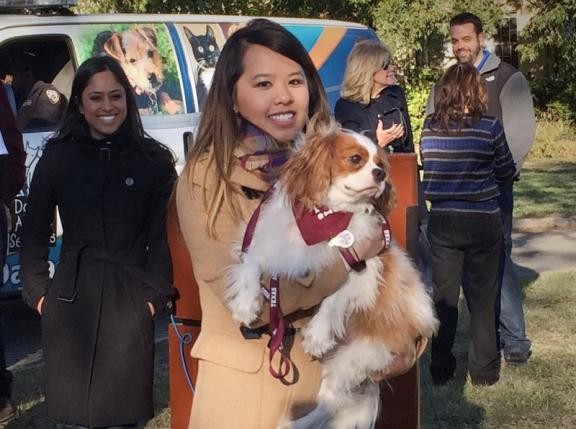How did dogs become man's best friend? According to a recent study, humans bond with dogs like they do with babies. In the academic study researchers show how a "mutual gaze" is connected to oxytocin chemicals between the owner and pet.
While humans have lived with domesticated pooches for thousands of years, the term "man's best friend" is only a few centuries old. While it is the closest relationship between species, until now it was not clear why.
A research team from Azabu University in Japan conducted an experiment in which they placed 30 dogs and their owners together in a room, according to Los Angeles Times. The owners were instructed to gaze at, talk to, or touch their pets for half an hour.
After 30 minutes had passed, the researchers collected urine samples from each owner and pet, and then tested them for oxytocin levels. Oxytocin, the "love hormone," zaps positive messages to the brain during mammals' reproduction, childbirth, and bonding.
Takefumi Kikusui, the study's co-author, said that human-dog bonding is "comparable" to parent-infant bonding. In both relationships oxytocin creates a "positive loop."
Amazingly, Kikusui's team learned that eye contact increased oxytocin levels more than communication or even physical contact did. The researchers conducted the same experiment with wolves, domesticated dogs' nearest existing relatives, to learn the cause of this bonding.
In the repeat experiment with the wolves, eye contact did not cause a major release of oxytocin. So gaze-bonding must have developed as dogs evolved from wolves.
Evan MacLean, a Duke University researcher, explains that the bonding could have developed as humans first domesticated dogs, sometime between 11 and 16 millennia ago, according to Christian Science Monitor.
In the experiment's second phase, researchers gave the dogs oxytocin contained in a nasal spray, and then transferred them to a room with their owners and strangers. The females looked at their owners longer, which increased the latter's oxytocin levels.
Kikusui explains that dogs can "naturally" show mutual gazing with their owners. It is promoted when the owners spend quality with the pets, through activities such as talking and petting.



























